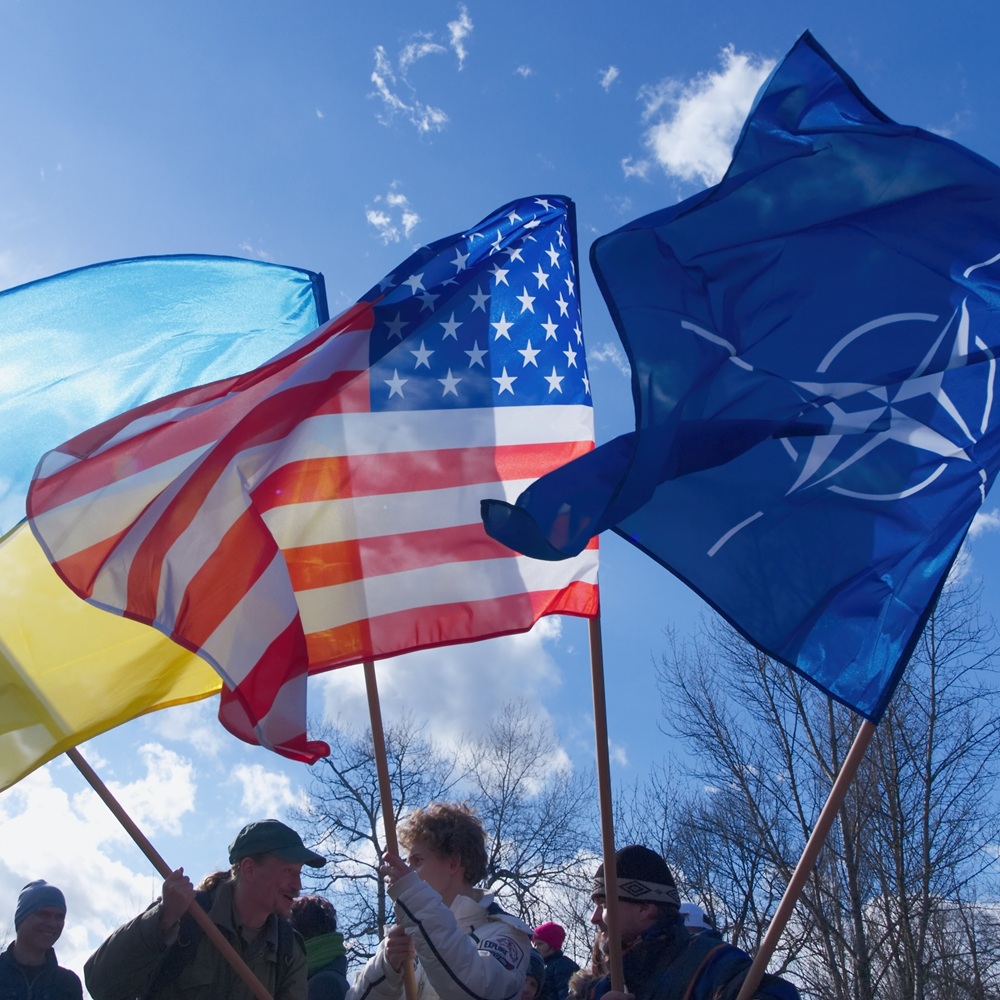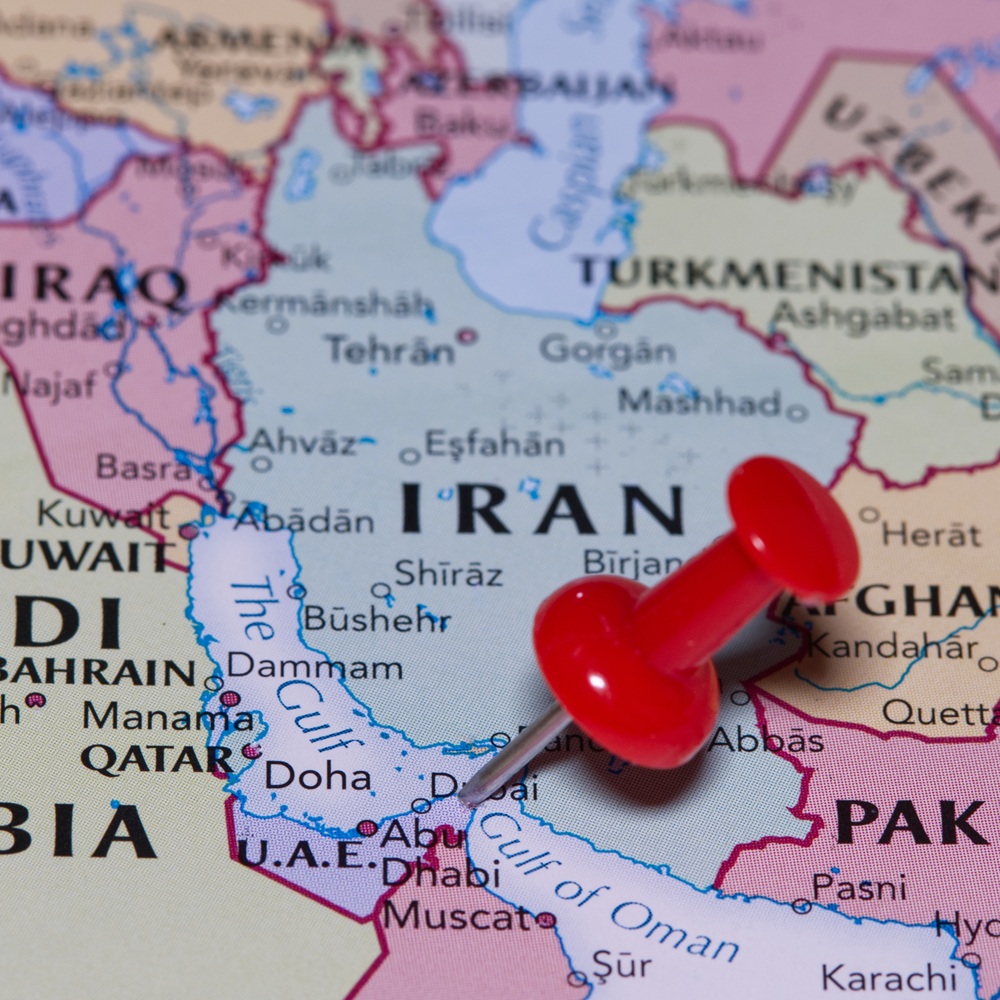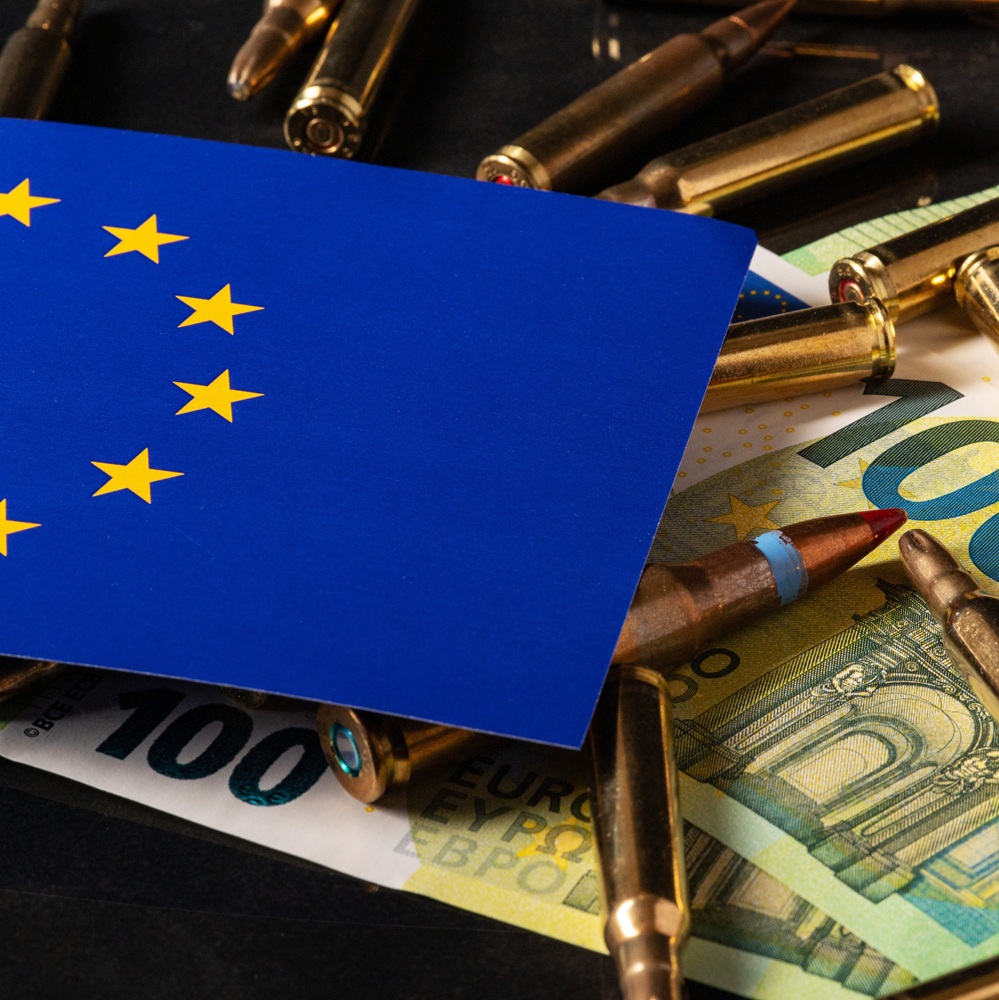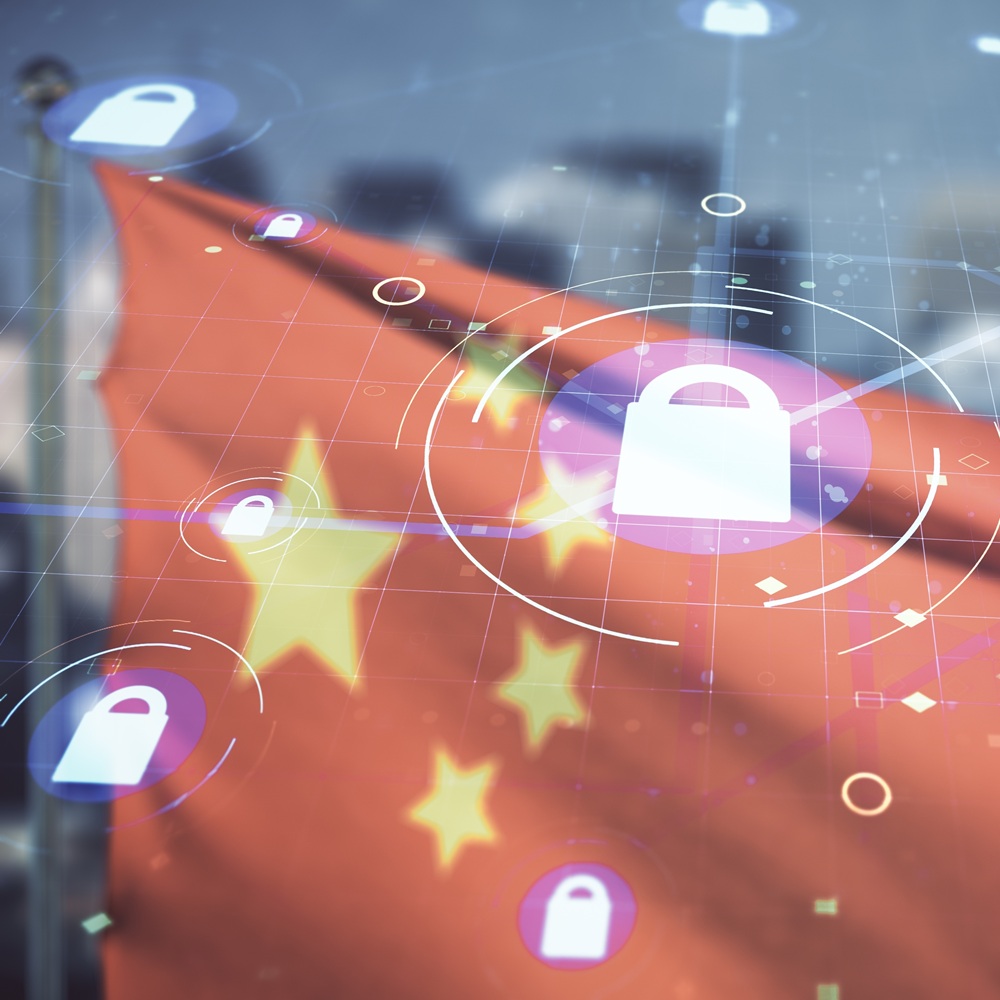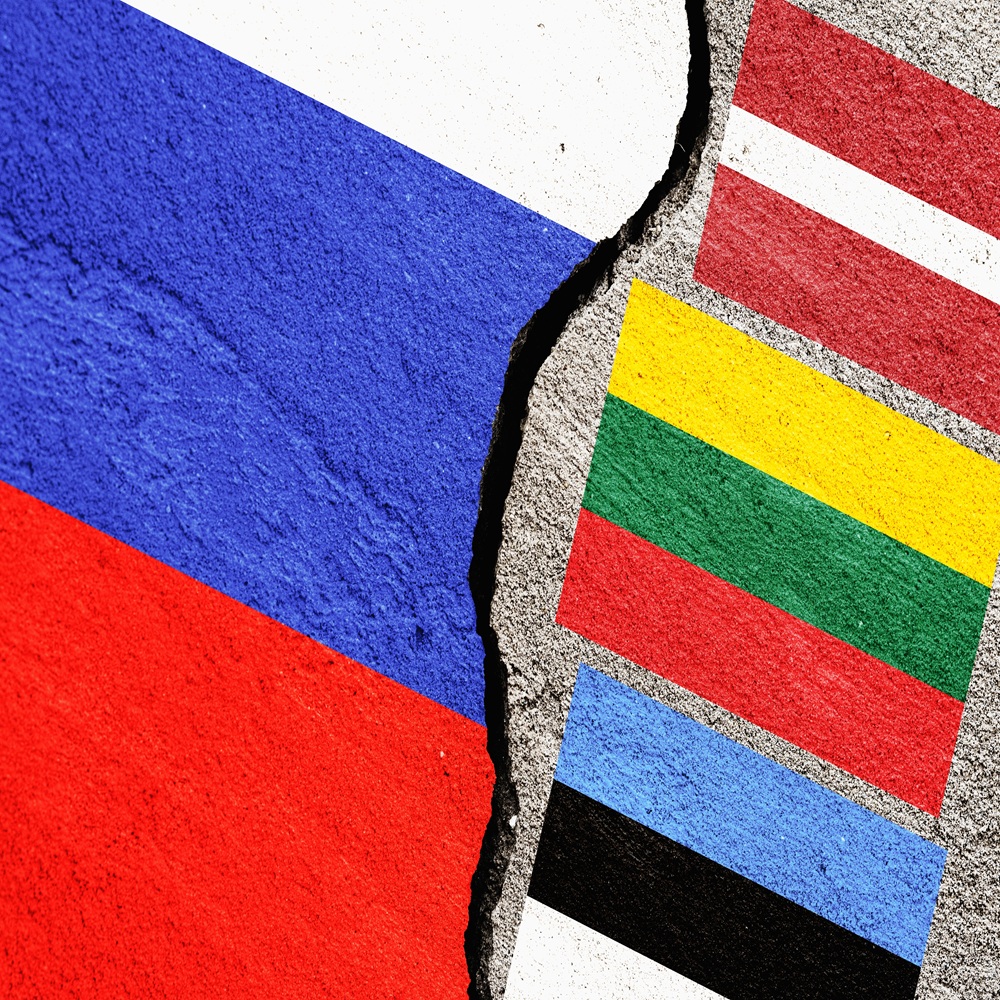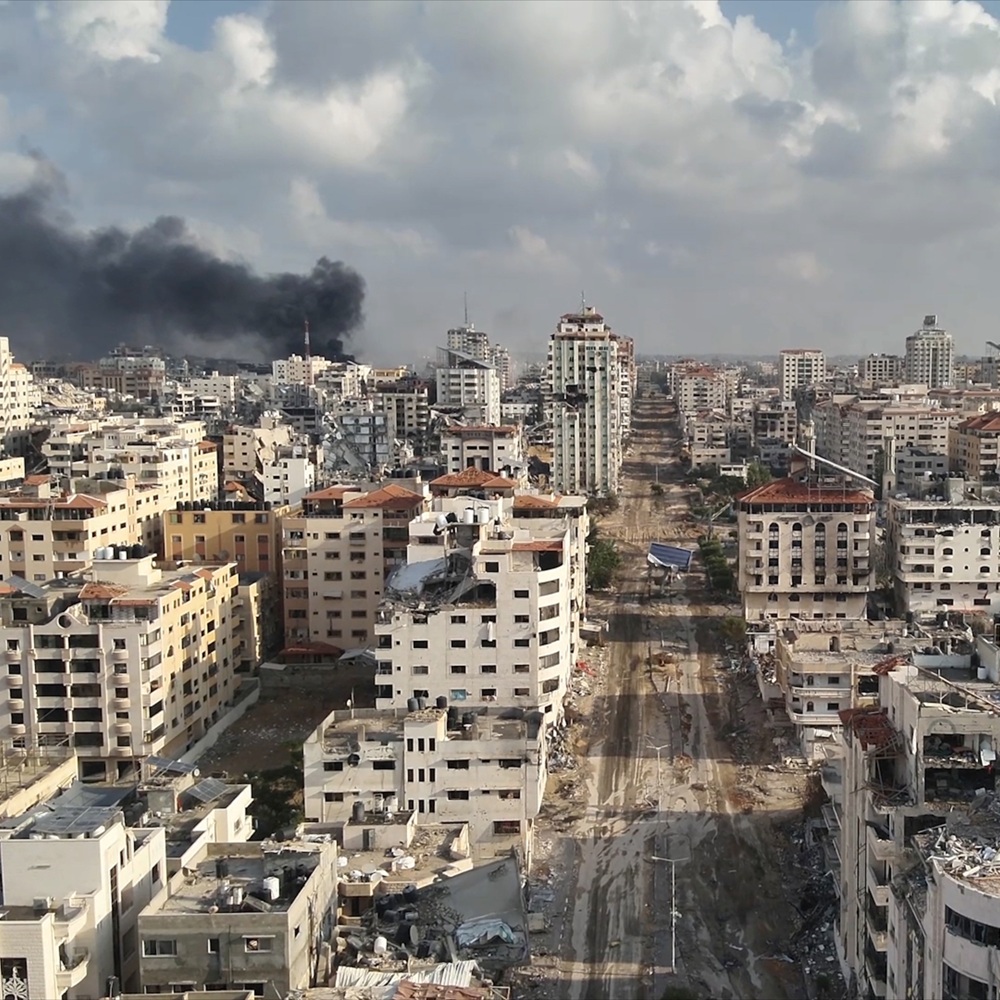The triple dimension of Chinese cyberspace: defense, science and technology
by Elio Perera Pena
한국어로 읽기
Leer en español
In Deutsch lesen
Gap
اقرأ بالعربية
Lire en français
Читать на русском
Abstract Cyberspace has become a crucial area for the governance and sovereignty of states, especially in the case of China which has developed a comprehensive digital governance strategy. The Chinese government prioritized the construction of a technological infrastructure including Artificial Intelligence and Cloud Computing to strengthen its control over Cyberspace and ensure National Security. Introduction The term cyberspace was coined by writer William Gibson in his science fiction novel “Neuromancer” (1984), in which he described it as a consensual virtual reality. Since then, the concept has transcended fiction to become a tangible domain. Cyberspace can be defined as a digital environment created by the global interconnection of computer systems, networks, and devices, where information flows and human interactions take place virtually. It has undergone significant evolution since its inception. In the 1980s and 1990s, it was mainly limited to academic and military networks in the United States, such as ARPANET. With the arrival of the Internet, cyberspace expanded rapidly, incorporating millions of users and giving rise to new forms of communication such as email and online forums. The gradual proliferation of mobile devices and social networks has transformed cyberspace into an omnipresent and integral part of everyday life. In terms of communication and connectivity, it revolutionized the way people communicate by eliminating geographical and temporal barriers. Cryptocurrencies and Fintech [1] are examples of how cyberspace has transformed the economy, creating new opportunities. Regarding its interconnection with culture and entertainment, the digitalization of culture has given rise to new forms of creation and consumption such as music and video streaming, online gaming, and digital art. Cyberspace: A Strategic Domain Cyberspace has become a strategic battlefield for the hemisphere. In China, cyberspace is seen as an essential component of national security and economic development. The Chinese government has implemented strict policies to regulate cyberspace, including the Great Firewall of China, which controls the flow of information and protects digital infrastructure. In the 10th Five-Year Plan (2001–2005), promoting the information technology sector, increasing internet accessibility, and encouraging the use of digital technologies were established as national priorities. At the Chinese Communist Party Congress in 2002, information was recognized as essential for the growth of comprehensive national power; consequently, in 2005, the National Strategy 2006–2020 for Information Development was published. Regarding the treatment, study, and control of cyberspace, the People’s Liberation Army has always granted crucial importance to information and its technical infrastructure for collection, protection, and distribution, given its duty to safeguard national interests. This is demonstrated by an article written by then-Colonel Wang Baocun in the “PLA Daily” in April 1998: “The opportunity created by the new military revolution is once-in-a-lifetime. Our army enjoys many favorable conditions for informatization. Our country has achieved rapid informatization and has the potential energy to extend this work to the military. An important feature of the current Military Revolution is that local informatization begins earlier and develops faster than in the armed forces and is more technologically advanced. After generating sufficient potential energy, the work will extend to the military and trigger a massive military transformation.” (Expósito, 2022) While for most of the so-called West, and thus also for the United States, there are five domains — land, sea, air, space, and cyberspace — Chinese specialists conceive of cyberspace as the interaction of two distinct realms: the electromagnetic spectrum and informatization. In recent decades, China has emerged as a global power in the scientific and technological sphere, consolidating its position through a comprehensive strategy that links the development of science with the expansion of cyberspace. Since the implementation of the "Made in China 2025" Plan, the government has prioritized technological innovation as the engine of development, focusing on areas such as AI, big data, and cybersecurity, positioning China as a leader in the Fourth Industrial Revolution. Launched in 2015, this is an industrial strategy that aims to transform China into a high-tech manufacturing power. The goal is to reduce dependency on foreign technologies and promote local innovation in key sectors such as robotics, AI, electric vehicles, and biotechnology. The Internet of Things (IoT) is an essential component that complements it, enabling the creation of smart factories and more efficient supply chains. “Internet Plus”, also launched in 2015, promotes the integration of the internet with traditional sectors such as agriculture, logistics, and financial services. It seeks to drive the digitalization of the economy and promote the use of emerging technologies like IoT, big data, and cloud computing. The Internet of Things (IoT) is fundamental to Internet Plus, as it facilitates connectivity between devices and systems, enabling the creation of interconnected digital ecosystems. The proliferation of connected devices allows the IoT to support the development of advanced communication platforms such as WeChat and Alipay, which integrate multiple services into a single application. The relationship between these initiatives lies in the fact that IoT acts as a bridge between “Made in China 2025” and “Internet Plus”, enabling the convergence of advanced manufacturing and the digitalization of the economy. On one hand, “Made in China 2025” uses the Internet of Things to modernize industry and improve productivity. On the other hand, “Internet Plus” leverages IoT to create new data-driven services and business models. This synergy has allowed China to position itself as a global leader in technological innovation. The relationship between science and cyberspace has been strengthened thanks to massive investment in research and development (R&D). The country has allocated significant resources to training talent in STEM disciplines (science, technology, engineering, and mathematics) and has established centers of excellence in technological innovation, which have enabled the development of AI algorithms applied in sectors such as medicine, logistics, and defense. On the international stage, the People’s Republic of China has adopted a cooperative approach, actively participating in international cybersecurity organizations and promoting initiatives such as the Digital Silk Road, which aims to foster technological development in other nations. The future of the relationship between science and Chinese cyberspace is marked by emerging trends that promise to further transform society. The adoption of technologies such as 5G and Blockchain [2] is redefining how people interact with the digital world. At the same time, as the Asian nation faces the challenge of balancing technological growth with sustainability and social equity, it is developing cyber power strategy as one of the fundamental pillars of its government policy. This strategy is understood as the need to build a robust digital infrastructure that advances quantum technology, A), and their derivatives, aiming for the greatest possible development of all areas involved in the defense of cyberspace. China has positioned itself as a global leader in AI, with companies like Baidu, Alibaba, and Tencent at the forefront of research. In the field of big data, it has leveraged its vast population and the proliferation of connected devices to collect and analyze massive amounts of information, improving efficiency in sectors such as transportation and urban planning. Cyberspace is vulnerable to threats such as cyberattacks, digital espionage, and cyber warfare. In response to these risks, quantum computing offers tools to strengthen cybersecurity. In today’s digital era, quantum computing and cyberspace have become two foundational pillars for technological development and national security. China, as one of the global powers in technological innovation, has invested significantly in both areas, recognizing their potential to transform the economy, defense, and society. Quantum Computing: A New Technological Paradigm Quantum computing represents a revolutionary leap in information processing capabilities. Unlike classical computers, which use bits to represent data as 0 or 1, quantum computers employ qubits, which can exist in multiple states simultaneously thanks to the phenomenon of quantum superposition. This allows for solving complex problems in a very short time, unlike traditional computers, which would require much longer periods. China is increasing its role as a global leader in the research and development of quantum computing. In 2020, the country achieved a historic milestone by demonstrating quantum supremacy with its Jiuzhang computer, capable of performing calculations in minutes that would take the most advanced supercomputers thousands of years. Not only China has placed itself at the forefront of quantum technology, but it also has carried deep implications for cyberspace. Regarding its advancements in this area, China has achieved significant milestones, such as the development of long-distance communication networks — one example being the Beijing–Shanghai backbone network [3]. The link between these elements is manifested in several key areas: 1. Quantum Cryptography and Cybersecurity One of the most significant impacts of quantum computing on cyberspace is its ability to revolutionize cryptography. Quantum algorithms have the potential to break current encryption systems, which form the basis of online security. This poses a threat to critical infrastructure, financial transactions, and secure communications. In response to this challenge, China has invested in the development of quantum cryptography, particularly in Quantum Key Distribution (QKD). In 2016, China launched the world’s first quantum satellite, “Micius”, which demonstrated the feasibility of secure long-distance quantum communication. This advancement lays the foundation for a global communication network immune to traditional cyberattacks. 2. Artificial Intelligence and Data Analysis Quantum computing has the potential to accelerate the development of AI and the analysis of large volumes of data. In cyberspace, this translates to greater capacity to detect patterns, predict threats, and optimize networks. The People’s Republic of China, already a leader in AI, has the potential to use quantum computing to strengthen its dominance in cyberspace, both nationally and internationally. Quantum networks enable the transmission of information with unprecedented security levels, reinforcing China’s leadership by strengthening its position in cyberspace and promoting its technological standards internationally. Quantum computing also offers strategic advantages. It could be used to develop more sophisticated cyberweapons capable of disabling enemy systems. It also holds the potential to enhance cyber defense, protecting critical infrastructure from attacks. China has integrated quantum computing into its national defense strategy, recognizing its importance in maintaining superiority in cyberspace. 3. Challenges and Ethical Considerations The global technological race among powers such as the United States is one of the key variables in this challenge and could exacerbate geopolitical tensions. There are ethical concerns about the use of quantum computing in cyberspace. The power of this technology has already been used for malicious purposes such as espionage, cyberattacks, or information manipulation, especially by powers adverse to China. As quantum technology advances, there is growing integration between its components and cyberspace, driving innovation in fields such as secure communication, artificial intelligence, and national defense. China's success in these areas will have global implications, redefining the future of technology and security in this century, toward essential economic, political, and social development goals. China has recognized the importance of cyberspace as a modern battlefield and has developed regulations and strategies to protect its interests in this domain, establishing laws that require companies and organizations to implement strong security measures and report cybersecurity incidents. In this regard, the transformative potential of quantum computing for national defense and security is acknowledged. Quantum technology has been applied to conflict simulation and the analysis of complex scenarios in the military sphere. The rapid development of the IoT presents challenges. The interconnection of devices creates vulnerabilities that can be exploited through cyberattacks on power grids, transportation systems, and more, which could have devastating consequences. China recognized these risks and implemented measures to strengthen cybersecurity. In 2017, the government enacted the Cybersecurity Law, which establishes strict requirements for data protection and network security. On the communication front, authorities have made efforts to promote not only the country’s technological capabilities, but also elements of Chinese culture. Platforms such as TikTok (known domestically as Douyin) have gained global popularity, becoming vehicles to counter negative narratives in Western media. This approach has resonated in other countries, especially in the so-called Global South, with which China has established strategic technological partnerships. 4. Cyberspace and Chinese Cyber Sovereignty Cyber sovereignty refers to the notion that each nation has the right and responsibility to exercise control over its cyberspace, protecting its digital infrastructure, regulating the flow of information, and defending its national interests in the digital realm. For China, this concept is fundamental to its Internet governance approach and aligns with a vision of a regulated and secure Internet. In summary, cyber sovereignty is defined as a condition in which the state has authority over cyberspace within its borders, including the ability to regulate Internet access, control online content, and protect digital infrastructure. It is based on the premise that cyberspace is a strategic domain that must be managed to ensure national security, social stability, and economic development. Its key principles include: State control: The Chinese government exercises strict control over Internet infrastructure and online content.National security: The protection of cyberspace is considered an extension of national defense.Content regulation: Measures are implemented to filter information deemed harmful or contrary to state interests.Technological autonomy: China seeks to reduce dependence on foreign technologies and promote the development of local solutions. Legal and Political Framework The Cybersecurity Law (2017) establishes regulations for data protection, infrastructure security, and online content regulation. Regarding the practical applications of China’s cyber sovereignty, one key element is the ability to exercise surveillance, i.e., the use of advanced technologies to monitor and control the flow of information. Promotion of local platforms: Encouragement of Chinese alternatives to global services (e.g., WeChat instead of WhatsApp, Baidu instead of Google).Development of technological standards: Creation of domestic standards for technologies like 5G and the Internet of Things, aiming to reduce dependence on international norms. International Implications Alternative governance model: China promotes its cyber sovereignty approach as an alternative to the Western model of an open and free Internet.Global influence: Through initiatives like the Digital Silk Road, China offers other countries the opportunity to adopt its model of digital governance and technologies.International tensions: Disputes with other countries over the control of critical technologies and influence in global cyberspace.Balance between security and innovation: Strict control may limit creativity and entrepreneurship in the tech sector. Cyber sovereignty is a key link in China’s digital strategy, reflecting its state control and national security approach to cyberspace. This concept has enabled the Asian nation to develop a unique model of digital governance, characterized by regulation, promotion of local technologies, and projection of global influence. Internet Governance China has adopted a unique approach to Internet governance, based on the principle of national sovereignty. Unlike the open Internet model promoted by the United States, the Asian country advocates a model in which each nation has the right to regulate and control its own Internet infrastructure. This approach is reflected, among other aspects, in the adoption of policies that restrict access to foreign websites, to protect content aligned with national interests. China has also promoted international initiatives to establish digital governance norms that support its vision of cyber sovereignty. One example is the “Code of Conduct for International Information Security”, presented to the United Nations (UN), which advocates for the respect of national sovereignty in cyberspace and non-interference in the internal affairs of other countries. In response to perceived threats from the United States and other powers, China has strengthened its cyber defense capabilities. One of the most significant initiatives has been the creation of a unit within the People’s Liberation Army specializing in cyber operations. China has denounced the surveillance activities of the United States National Security Agency (NSA). The rivalry driven by the U.S. stems from China’s accelerated development in network technologies and the rise of companies like Huawei, global leaders in technology. The Asian country has sought to counter U.S. influence in cyberspace through strategic alliances with other nations while pursuing diplomatic and technological balance. It has collaborated with Russia on joint cybersecurity policies and has promoted its vision of Internet governance in international forums such as the Shanghai Cooperation Organization (SCO). The U.S. aggressiveness in the digital realm, aimed at countering China’s rise, could lead to a fragmentation of information technology, particularly in terms of data transmission, where different regions might adopt contradictory standards and regulations. This scenario, known as the “Balkanization of the Internet,” would bring negative consequences for innovation and international cooperation. For this reason, China strives — through its domestic policies and within international forums — to maintain a balance in the use of global cyberspace and in the effective approach to managing digital technologies. While some politicians and academics (Friedberg, Pillsbury) argue that China’s economic and military power will lead to an irrational use of cyberspace, others (Shambaugh, Steinfeld) maintain that China is increasingly integrated into international institutions and the global economy. They also emphasize the Chinese government's growing and sustained concern for international stability. Chinese authorities have had the opportunity to assert that, aside from the United States' aggressive stance, there are common interests between both nations regarding the defense of cyberspace and cybersecurity. For both countries, maintaining cybersecurity is vital for stability and social development. Their strategic approaches are based on serving their national interests, which is why both governments present their respective cyberspace strategies as models to emulate. Both, China and the United States, consider that strategic information must be handled with great care to ensure the proper functioning of public administration and national security. China supports the U.S. perspective on a cybersecurity governance model based on a multistakeholder approach, involving government, private, civil, and military actors in the implementation and execution of responsibilities. Certain reactionary sectors in the United States have worked to prevent possibilities for mutual understanding. In 2018, the U.S. Department of Justice launched the “China Initiative”, aimed at countering what was perceived as economic espionage and intellectual property theft, allegedly carried out primarily by U.S. citizens of Chinese descent. This initiative had several geopolitical consequences: Tension in U.S.–China relations: Considered a discriminatory measure, seen as an attempt solely to contain China's economic and technological rise.Impact on bilateral cooperation: It increased distrust, negatively affecting areas of collaboration such as trade, investment, and joint work in science and technology.Concerns about civil rights: It was criticized by human rights groups and academics for targeting Americans of Chinese descent, creating an atmosphere of fear and self-censorship among Chinese-origin researchers and scholars. In some cases, this led to the loss of international collaborations. In 2021, President Joe Biden’s administration announced the end of the initiative, acknowledging its inappropriateness and the criticism it had drawn. However, in 2023, new accusations emerged involving Chinese nationals, allegedly responsible for flying "spy balloons" over U.S. military installations. A defamatory campaign sought to fuel Sinophobia, and media outlets once again contributed to this narrative. While the Chinese Ministry of Foreign Affairs denied involvement, in the United States, the president convened the Chairman of the Joint Chiefs of Staff and mobilized several strategic components, including the U.S. Cyber Command (US CyberCom). Several U.S. intelligence analysts, including Christopher Johnson, admitted that the United States conducts espionage against China. The wave of Sinophobia was intended to justify to the public the U.S. efforts to obtain vital information about China’s strategic interests, especially those linked to digital transformation and cyberspace. In 2024, the U.S. government announced that by 2025 it would double tariffs on Chinese semiconductors, while continuing to accuse Beijing of forcing technology transfers and stealing intellectual property. Final Considerations Cyberspace and digital governance are part of a broader war rooted in the cultural dimension of contemporary hegemonic power, which is heightened by the existing links between media and culture and their influence on relationships of domination. A Cold War persists in the form of a battle for individuals' minds, underscoring its ideological nature (Expósito, 2022). With the advance in science, psychological warfare has evolved, largely due to the development of new information and communication technologies. Faced with strong U.S. interference, psychological warfare is closely linked to the justification for dominating cyberspace, interpreted also as political warfare — understood as crisis diplomacy, war of nerves, or dramatic intimidation diplomacy. Through these strategies, the United States seeks to counter China’s remarkable progress in commercial economic development, particularly in the technological sphere. To support these efforts, the U.S. intelligence directorate hires public relations consultants responsible for conducting complex psychological operations in the informational and media domain. One of their main tasks is to validate and frame information production for propaganda purposes, where military communication strategies and tactics are intertwined with and become part of media operations, in which media outlets function as oligopolistic enterprises. According to U.S. intelligence agencies, information is treated as a content-seeking tool used to persuade public opinion, regardless of its truthfulness (for example, the repeated accusations of alleged Chinese spies operating within the United States). Communication is viewed as a vehicle for promoting the communicator’s interests — in other words, an effective way to ensure that a message, with a purely propagandistic purpose, aligns with political interests, serving the agenda of the executive branch and transnational media corporations in the United States, while also considering the specific interests of the State Department and the Department of Defense. With a “prepackaged” message, cyberspace — a concept not yet fully understood by the average citizen — is presented as a stimulus for the development of various cyberspace-related programs in the U.S., such as Cicada, Tripwire, among others. As a result, the People’s Republic of China becomes the subject of a U.S. social experiment, through which this subject — often portrayed through manipulated or falsified narratives — facilitates the enrichment of the aforementioned large transnational media corporations, one of the methods employed by the United States to maintain its hegemony. U.S. authorities, working in tandem with the corporate sector, continue to advocate — so far without the expected success — for the transition of network informatization to the multi-domain sphere, extending from Earth to space and cyberspace. This transition requires a close interconnection of all elements involved, and corresponding training of technical and logistical personnel. The restrictions imposed by the United States on China’s semiconductor industry are clearly aimed at obstructing China’s technological development, as the Asian nation still depends, to some extent, on certain components manufactured in the U.S. or by its allies. Accordingly, the restrictions enforced through the 2022 CHIPS and Science Act limit China’s access to advanced chip manufacturing technologies, such as Extreme Ultraviolet Lithography (EUVL) equipment, essential for producing next-generation semiconductors. It is important to note that chips and Chinese cyberspace are closely interrelated, as chips are fundamental components of the technological infrastructure that sustains cyberspace. In short, they are the technological foundation that enables the operation, expansion, and security of Chinese cyberspace, and their development is strategic for China’s autonomy and competitiveness in the global digital arena. The link between the communication sphere and cyberspace in the People’s Republic of China reflects its development model and its governance vision, aimed at promoting social cohesion. Through the use of advanced technologies and the implementation of policies, China has managed to maintain a high level of control over its digital environment, thereby promoting its national interests. China’s security and defense strategy in relation to cyberspace reflects its aspiration to become a global digital power. By adopting an approach based on national sovereignty, China seeks to protect its interests and counter threats posed by the United States and other powers. In an increasingly interconnected world, it is essential that nations find ways to cooperate in the field of cybersecurity, by establishing standards and norms that promote stability and trust in cyberspace. As one of the leading digital powers, China maintains its commitment to playing a crucial role in balancing the international order. The relationship between quantum computing, cyberspace, and China’s military security and defense regulations is complex and multifaceted. Quantum computing has the potential to revolutionize how information is processed and how security is ensured. China has been a pioneer in integrating quantum computing into its security and defense strategies, which has important implications for global security. The “Internet Plus” initiative served as a key catalyst for China's digital transformation, positioning the country as a global leader in technological innovation. By highlighting the close interdependence between cyberspace and quantum computing, it becomes evident how emerging technologies are transforming the world. China has demonstrated a strong commitment to the development of quantum computing, recognizing its potential to strengthen its position in cyberspace and its global implications that will reshape the future of technology and security in the 21st century. For years now, cyberspace has become part of the obscure content used in propaganda spread by what is referred to as the mainstream press. It is used not only as a critical domain to be protected for the sake of national sovereignty and security, but also as a media spectacle, a staged platform in which the press is employed to convey messages desired by the political and economic executives of countries such as the United States. In such cases, in addition to the legitimate need to protect cyberspace as an intrinsic component of political and social stability, it is also used as a justification for massive financial allocations, supposedly in the name of national integrity, which in reality flow into the coffers of the Military-Industrial Complex. Notes [1] A company that uses technology to offer financial services in an innovative, efficient, and accessible way. The term comes from the combination of the words “finance” and “technology.”[2] Blockchain is a distributed ledger technology that allows information to be stored securely, transparently, and in a decentralized manner. It consists of a chain of blocks linked together, where each block contains a set of verified transactions or data. These blocks are connected through cryptographic techniques.[3] An important high-speed rail line in China that connects the cities of Beijing and Shanghai. Known as the High-Speed Railway, it is one of the busiest and most strategic routes. It was inaugurated on June 30, 2011 and covers an approximate distance of 1,318 km. References Expósito, J. (2022, enero 19). China en el ciberespacio. Revista Ejércitos. http://www.ejercitos.comFriedberg, A. L. (2011). A Contest for Supremacy: China, America and the Struggle for Mastery in Asia. Nueva York: W.W. Norton.Lewis, J. A. (2022). Chinas Cyber Strategy: A Comprehensive Analysis. Center for Strategic and International Studies. En www.centerforstrategicstudiesMinisterio de Defensa Nacional de la República Popular China (2023). Libro Blanco de Defensa Nacional. Beijing: Editorial del Pueblo.Patiño Orozco, G. A. (2021). Una comparativa de los esquemas de ciberseguridad de China y Estados Unidos. OASIS, 34, pp. 107-126. https://doi.org/10.18601/16577558.n34.07Perera Pena, E. “El llamado globo chino y algunas de sus derivaciones estratégicas”. En Revista Cuadernos de Nuestra América. CIPI. La Habana. Cuba. ISSN: 2959-9849.Pillsbury, M. (2015). The Hundred Year Marathon. Chinas Secret Strategy to Replace Americas as the Global Superpower. Nueva York: Henry Holt.Segal, A. (2020). The Hacked World Order: How Nations Fight, Trade, Manueuver, and Manipulate in the Digital Age. New York. Public Affairs.Shambaugh, D. (2013). China Goes Global. The Partial Power. Nueva York: Columbia University Press.Spanish.news.cn 16.3.2023. Libro Blanco. China explora activamente nuevos modelos de “ciberjusticia”. En: www.spanish.xinhunet.comSteinfeld, E. S. (2017). Teams of Rivals: China, the United States, and the Race to Develop Technologies for a Sustainable Future. In J. DeLisle, and A. Goldstein, Chinas Global Engagement: Cooperation, Competition, and Influence in the 21st Century (pp.91-121). Washington: Brookings Institution Press.Zhang, L. (2021). Chinas Quantum Supremacy. Beijing: Tsinghua University Press. Cuadernos de Nuestra América. No. 014 | Nueva Época 2025, Centro de Investigaciones de Política Internacional (CIPI). Under CC BY-NC 4.0
